Mechanoresponsiveness PT 8
Mechanoresponsiveness
Part 8
Jean Luc Cornille
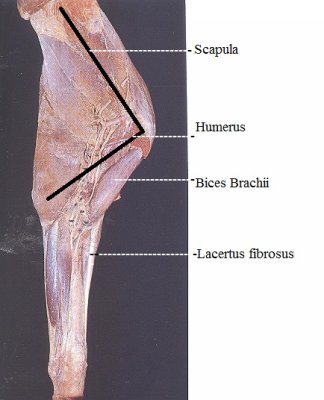
“Muscle is a highly mutable tissue in that both its structure and function adapt to the demand placed on it. Like all biological tissues, modifications to the relative level of physical stress to muscle produce predictable results. One classic example of muscle responding to high physical stress dosage with either an injury or a beneficial adaptation is high force eccentric activity.” (Paul C. LaStayo,PT, PhD, John M. Woolf, PT, MS, ATC, Michael D. Lewek PT, Lynn Snyder-Mackler, PT, ScD Trude Reich, Stan, L. Lindstedt, PhD. Eccentric muscle Contractions: their Contribution to Injury, Prevention, Rehabilitation, and Sport. J Orthop Sports Phys Ther. Volume 33. Number 10. October 2003)
Eccentric contraction occurs when an external force exceeds the force produced by the muscle and the muscle lengthens producing an eccentric contraction. A good example of this mechanism is the work of the biceps brachii during the stance phase of locomotion. The horse shoulder flexes and the elbow extends. This results in an increase of lengths of the biceps muscle tendon unit and the muscle works eccentrically, storing elastic strain energy in the internal tendon and the series of elastic elements of the muscle. (On this picture series of Edward Muybridge, scapula, humerus and radius are illustrated as red lines. 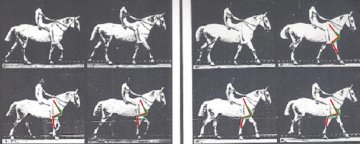 The biceps is illustrated in green. The closing of the scapulo-humeral joint and extension of the elbow are easy to observed inducing eccentric contraction of the biceps brachii. The work of the biceps brachii is helped by a thick tendon within the muscle. The biceps store elastic strain energy in the thick internal tendon during the stance. This energy is then released at the end of the stance catapulting the front limb into the swing phase.
The biceps is illustrated in green. The closing of the scapulo-humeral joint and extension of the elbow are easy to observed inducing eccentric contraction of the biceps brachii. The work of the biceps brachii is helped by a thick tendon within the muscle. The biceps store elastic strain energy in the thick internal tendon during the stance. This energy is then released at the end of the stance catapulting the front limb into the swing phase.
Eccentric contraction is regarded as a high power contraction. One suggestion is that the contractile cells work more intensively resisting to be torn by the elongation of the muscle. Several words define eccentric contraction. One is “active stretching”. This is not a stretching at all as eccentric contraction is the most powerful type of muscle contraction. The term “stretching” is in reference of the muscle’s elongation and “active” in reference to the work of the contractile cells. Another definition commonly used is “negative work.” This does not mean that the eccentric contractions are bad. Negative work is in reference to the direction of the muscle’s elongation that is in the opposite direction than the contraction of the cells within the muscle.
During normal locomotion and never the less athletic performances, muscles are collectively doing near equal amount of shortening (concentric) and lengthening, (eccentric) contractions. Considering that the intensity of eccentric contraction can create damages on the contractile and cytoskeletal components of the muscles fibers, a sound understanding of what happens inside the muscle when working eccentrically, can help the rider in managing properly the muscular work of the horse. Traditionally, high force eccentric contractions have been associated with a muscle damage response. 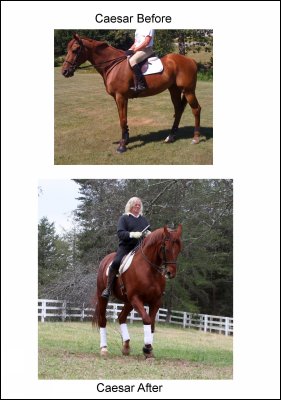
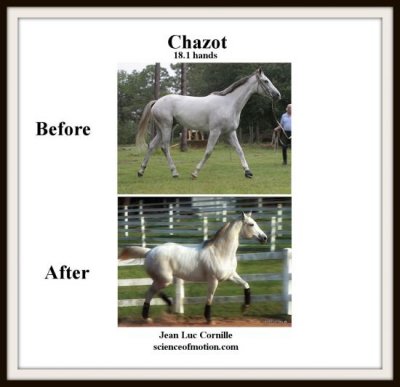
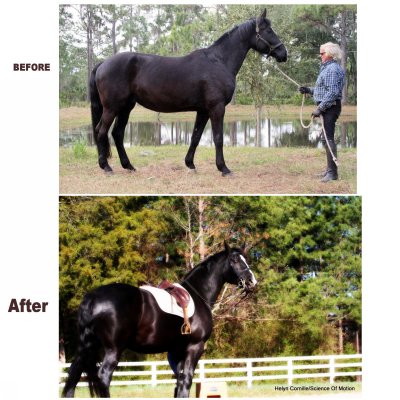 This was due to insufficient understanding of the muscular work associated with eccentric contractions. Horses were submitted to impact forces and fast forward motion causing damages. Instead when used in the light of actual knowledge and therefore, respecting the horse’s frequency, (natural cadence), and understanding the concept of deceleration prior propulsion, eccentric contractions can enhance the integrity of muscles, ligaments and tendons, bone density and others benefits. Humans body builders abundantly use eccentric contractions and the spectacular muscular development of the horses trained through the concepts of the science of motion, result from adequate use of eccentric contractions.
This was due to insufficient understanding of the muscular work associated with eccentric contractions. Horses were submitted to impact forces and fast forward motion causing damages. Instead when used in the light of actual knowledge and therefore, respecting the horse’s frequency, (natural cadence), and understanding the concept of deceleration prior propulsion, eccentric contractions can enhance the integrity of muscles, ligaments and tendons, bone density and others benefits. Humans body builders abundantly use eccentric contractions and the spectacular muscular development of the horses trained through the concepts of the science of motion, result from adequate use of eccentric contractions.
Muscles operate eccentrically to either decelerate the body or to store elastic strain energy in preparation for a shortening, (concentric) contraction. 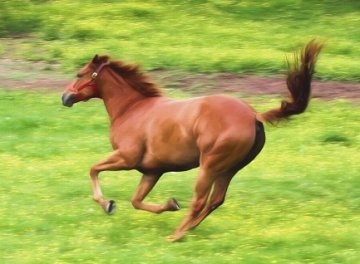 In their study, Paul LaStayo and his team refer to a man hiking downhill. In this example, the knee extensor muscles behave like a shock absorber as the knee moves from extension to flexion. As long as the man just walk downhill, the energy stored in the tendinous components of the muscle is dissipated as heat. Instead, if the man was running on the flat at his natural frequency, the energy stored during the decelerating phase would be used for the following propulsive phase. Either if it is a man, or a deer, or a horse running, the knee and hip extensors are rapidly strained. The absorbed energy is temporary stored as elastic strain energy and reuse in the following concentric contraction. The phenomenon is known as “stretch-shorten contraction,” (SSC).
In their study, Paul LaStayo and his team refer to a man hiking downhill. In this example, the knee extensor muscles behave like a shock absorber as the knee moves from extension to flexion. As long as the man just walk downhill, the energy stored in the tendinous components of the muscle is dissipated as heat. Instead, if the man was running on the flat at his natural frequency, the energy stored during the decelerating phase would be used for the following propulsive phase. Either if it is a man, or a deer, or a horse running, the knee and hip extensors are rapidly strained. The absorbed energy is temporary stored as elastic strain energy and reuse in the following concentric contraction. The phenomenon is known as “stretch-shorten contraction,” (SSC). 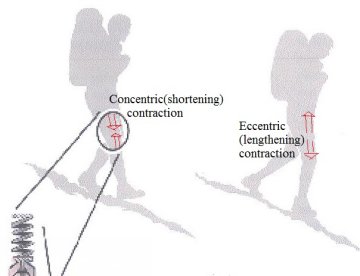 The storage and recovery of elastic strain energy during the SSC is an important determinant of performance as the energy stored during the lengthening cycle can substantially amplify force and power production in the subsequent concentric contraction.
The storage and recovery of elastic strain energy during the SSC is an important determinant of performance as the energy stored during the lengthening cycle can substantially amplify force and power production in the subsequent concentric contraction.

People who jog know very well how easier became the stride when they jog at their natural frequency. “The ability to recover elastic strain energy is apparently so advantageous that the most economical stride frequency in running may be set by this key component alone.” (LaStayo and all) The phenomenon of stretch-shorten contraction is the scientific base of what is known in our course as the “Pignot jog.” Several conditions have to be put together, the cadence, the balance, the straightness, the lightness on the bit, the frequency of the rider’s movements and therefore the specific technique of the rising trot. There is a rhythm at the trot where muscles of the horse’s back and limbs store during the eccentric contraction an elastic strain energy that is reused in the following concentric contraction reducing considerably the metabolic cost of locomotion.
Remember, during normal locomotion and never the less athletic performances, muscles are collectively doing near equal amount of shortening (concentric) and lengthening, (eccentric) contractions. This help understanding why a horse working with a functional physique and jogging at its natural cadence, not only gains a trot with greater amplitude and suspension, not only places its neck at the most efficient long position, but also gives the feeling of ease and effortlessness. The “more forward” or “fast forward” aberration that is rewarded in the show ring and promoted outside of the dressage ring, hampers the horse’s ability to benefit from the stretch-shorten contraction phenomenon.
Amplitude, suspension and elasticity that are gained jogging the horse at its natural cadence, result from the muscles’ adaptation to high force contractions. “The elastic property of vertebrate myofibrils is thought to be due in large part to the enormous protein filament titin.” (Paul LaStayo) Titin functions as a serially linked springs that developed tension when stretched. Filaments titin vary in size and stiffness, which explains the elastic stiffness diversity across vertebrate muscle. Titin has multiple roles including providing the forces needed to maintain proper sarcomere integrity during contraction. The purpose of this series “Mechanoresponsiveness”, is awaking riders to the fact that many layers are involved in performance and soundness. The authors of the study talk about “elastic-stiffness” and that is reality. Muscles manage forces, which include resisting forces such as gravity and inertia. Muscles ensure proper tension of the tendons and aponeurosis increasing their capacity of storing elastic strain energy. The main function of the back muscles is protecting the equine thoracolumbar spine from movements that would exceed its possible range of motion. Elasticity is related to muscle power and muscle mass and proper education of filaments titin. Elasticity is not about stretching and elongation.
Because of its structural properties, the protein filament titin appears to have a significant role as the muscle spring. It develops in response to the high power of eccentric contractions but can also diminish with improper training. One of the most important point is progressive and consistent work. Following their example of the man hiking downhill, LaStayo and his team warn that if naïve of walking downhill, one might experience the next day significant muscle soreness. Novel high-force eccentric contractions damage the cytoskeleton. At the contrary, if practiced progressively and regularly, muscles adapt to high-force contractions. Filaments titin increase considerably after repetitive eccentric training.
Eccentric contractions occur whatever the training is good or poor. They have considerable advantages in respect of endurance, performance, soundness and even density of the bones structure. However, high power contraction can also have damaging effects. As they are about half of the horse’s muscular work during normal locomotion and of course, performances, they cannot be dismissed or ignored. The rider’s knowledge is the horse’s ultimate protection.
Jean Luc Cornille



 twitter
twitter facebook
facebook google
google stumbleupon
stumbleupon pinterest
pinterest yahoo
yahoo linkedin
linkedin